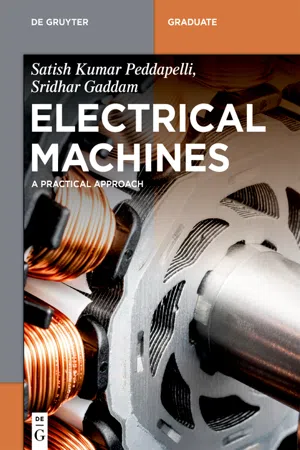
- 198 pages
- English
- ePUB (mobile friendly)
- Available on iOS & Android
About This Book
Electrical Machines covers the theoretical and mathematical concepts of the most commonly used electrical machines in industry and home appliances. This book presents the practical usage and functioning of electrical machines in a way which is easily understandable by the readers. It provides a different approach from other books and presents a step by step procedure on how to start and run the machine on various load, operating, and testing conditions and connections. It also presents a complete set of readings, calculations, and graphs/plots performed on standard electrical machines with rated voltage and current. Each chapter contains answers to questions related to particular machines and testing conditions/operations, solutions to numerical problems, and some exercise problems for practice.
Frequently asked questions
Information
1 DC Generators
1.1 Introduction
1.2 Operation of DC generator


1.3 Voltage equation of a generator
- P = Number of poles
- Φ = Flux/pole in weber
- Z = Number of conductors (Armature) = Number of slots × Number of conductors/slot
- N = No. of rotations in rpm; A = No. of parallel paths
- Eg = emf generated in any one parallel path in the armature
Table of contents
- Title Page
- Copyright
- Contents
- dedication
- Preface
- 1 DC Generators
- 2 DC Motors
- 3 Transformers
- 4 Induction Motors
- 5 Synchronous Generators
- 6 Synchronous Motor
- Bibliography
- Index